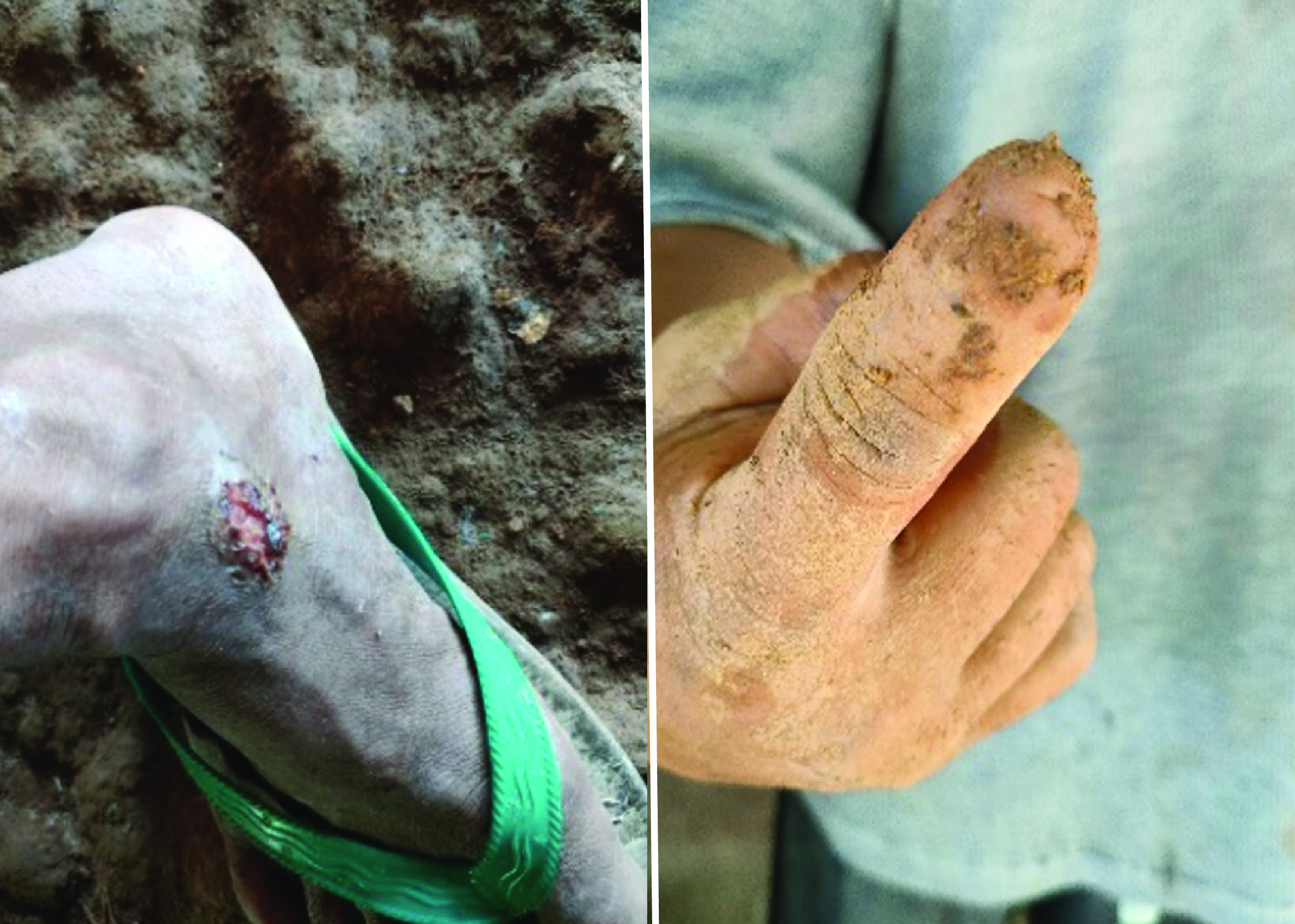RISK ANALYSIS OF OCCUPATIONAL HEALTH AND SAFETY INTHE ROOF TILE INDUSTRY IN INDONESIA

Downloads
Background: One of the Occupational Health and Safety (OHS) efforts to minimize risk is by carrying out risk management. The challenge in informal industries is that comprehensive risk analysis has not been carried out, so there is no control program to prevent work accidents. There have been work accidents in the roof tile industry due to various potential dangers that were not controlled beforehand. Purpose: To analyze the risks that exist in the roof tile manufacturing process. Method: This research uses descriptive research with a quantitative approach. This research was conducted in one of the roof tile industries in Indonesia. The units of analysis in this research are the process of mixing raw materials, grinding, molding, drying, and burning. The type of OHS risk analytical used is HIRARC, one of the implementations of ISO 31000 : 2018 for company risk management. HIRARC consists of hazard identification, risk assessment, risk evaluation, and risk control. Result: There are 89 potential hazards in the roof tile manufacturing process from. Most of the risks are low-level though there are still two categorized as very high. The results of the risk evaluation are categorized as Acceptable. Controls are carried out, starting from elimination until the use of Personal Protective Equipment (PPE). Conclusion: The most commonly identified hazards are physical hazards. Most risks fall to "Low and Acceptable’"category. However, there are still some risks that fall to "Unacceptable" category. Therefore, risk controls still need to be implemented based on hierarchy of controls.
Bakhshi, E., Ahmadi, M., Kalantari, R., 2021. The Survey of Safety Climate and Its Impact on Perceived Stress in the Workers of A Tile Industry in 2018. Journal of Health Sciences & Surveillance System Vol. 9(1), Pp. 60-65.
CDC, 2022. Scorpions | NIOSH | CDC.
Cheraghi, M., Shahrabi-Farahani, M., Moussavi-Najarkola, S.A., 2019. Ergonomic Risk Factors Evaluation of Work-Related Musculoskeletal Disorders by PATHand MMH in A Construction Industry. IranianJournal of Health, Safety and Environment Vol. 6(1), Pp. 1175-1189.
Das, B. 2020. Prevalence of Work-Related Occupational Injuries and Its Risk Factors among Brickfield Workers in West Bengal, India. International Journal of Industrial Ergonomics. 80(March):103052.
Desianna, D., Yushananta, P., 2020. Penilaian Risiko Kerja menggunakan Metode Hirarc di PT. Sinar Laut Indah Natar Lampung Selatan. Ruwa Jurai: Jurnal Kesehatan Lingkungan Vol. 14(1), Pp. 26-32.
Fatemi, F., Dehdashti, A., Zadehabbas, B., Kashani, H., 2020. Analysis of Occupational Accidents in the Manufacturing Sector in Semnan Province during 2013-2015. Journal of Community Health Research Vol. 9(2), Pp. 90-99.
Fouad, M., 2019. Assessment of Workers’ Knowledge Toward Occupational Hazards in Tiles Factories at Assiut Governorate. Assiut Scientific Nursing Journal Vol. 7(16), Pp. 120-130.
Gonawan, S., Othman, S., 2022. Workplace Safety based on The Hierarchy of Control-A Short Review. Enhanced Knowledge in Sciences and Technology Vol. 2(1), Pp. 79-083.
Hussain, Z., Author, Khan, J., 2018. Job Safety Analysis and Risk Assessment A Case Study of Frontier Ceramics Ltd. In: Conference: 4th International Multidisciplinary Research Conference on Global Prosperity through Research & Development. Sarhad University of Science & IT Peshawar, Pakistan. Pp. 1-11.
ILO, 2022. ILO dan Kementerian Ketenagakerjaan sambut Hari Keselamatan dan Kesehatan Kerja (K3) Sedunia 2022 dengan Mendorong Kolaborasi Multi-Pihak. International Labour Organization, Jakarta.
ISO, 2013. ISO 31000:2018(en), Risk Management — Guidelines.Lastri, P., Dewata, I., Sari, M., 2019. The Relationship between Work Period and Use of Personal Protective Equipment with Respiratory Disorder Complaints in Brick Craftsman in Sintuk Toboh Gadang District Padang Pariaman Regency 2017. IOP Conf. Ser.: Earth Environ. Sci. Vol. 314(1), Pp. 012015.
Lastri, P., Dewata, I., Sari, M., 2019. The Relationship between Work Period and Use of Personal Protective Equipment with Respiratory Disorder Complaints in Brick Craftsman in Sintuk Toboh Gadang District Padang Pariaman Regency 2017. IOP Conf. Ser.: Earth Environ. Sci. Vol. 314(1), Pp. 012015.
Lyon, B.K., Popov, G., 2019. Risk Treatment Strategies: Harmonizing the Hierarchy of Controls and Inherently Safer Design Concepts. Professional Safety Vol. 64(5), Pp. 34-43.
Maselli, G., Macchiaroli, M., Nesticò, A., 2021. ALARP Criteria to Estimate Acceptability and Tolerability Thresholds of the Investment Risk. Applied Sciences Vol. 11(19), Pp. 9086.
Ministry of Manpower Regulation of the Republic of The Republic of Indonesia, 2018, Keselamatan dan Kesehatan Kerja Lingkungan Kerja
Ministry of Manpower Regulation of the Republic of The Republic of Indonesia, 2021, K3 Tingkatkan Produktivitas Kerja pada Kegiatan Apel Mahasiswa K3 Seluruh Indonesia
Negara, N. L. G, Sutjana, I. D. P., 2020. Analisis Kecelakaan Keselamatan dan Kesehatan Kerja pada Penggalian Batu Pasir di Desa Pejaten-Tabanan. Bali Health Journal Vol. 3(2), Pp. 82-86.
Noor, I. H., R. Setyaningrum, dan M. A. Ma’ruf. 2018. 2018. Penilaian Risiko Kerja pada Pekerja Pencetak Batu Bata di Desa Gudang Tengah Kecamatan Sungai Tabuk Kebupaten Banjar. Jurnal Kebijakan Pembangunan. 13(2):167–172.
Okoye, P., 2018. Occupational Health and Safety Risk Levels of Building Construction Trades in Nigeria. Australasian Journal of Construction Economics and Building Vol. 18(2).
Rudyarti, E., 2022. Study of The Effectiveness of Implementing Occupational Safety and Health with The Hazop Method in The Cikarang Industrial Center. Indonesian Journal of Sport Management and Physical Education Vol. 1(1), Pp. 59-70.
Sugiyono, 2019. Metode Penelitian Kuantitatif, Kualitatif dan R&D.
Susilo, Leo J, Kaho, V.R., 2018. Manajemen Risiko Berbasis ISO 31000:2018 : Panduan untuk Risk Leaders dan Risk Practitioners. Grasindo.
Susilo, Leo J., Kaho, V.R., 2018. Manajemen Risiko Panduan untuk Risk Leader dan Risk Practitioners. Grasindo PT. Gramedia Widiasarana Indonesia, Jakarta.
Tarwaka, 2008. Keselamatan dan Kesehatan Kerja: Manajemen dan Implementasi K3 di Tempat Kerja. Harapan Press.
Tarwaka, 2016. Dasar-Dasar Keselamatan Kerja serta Pencegahan Kecelakaan di Tempat Kerja. Harapan Press.
UNDP, 2015. ERM - Step 2 - Risk Assessment.
Widodo, S., Wijayanti, S.P.M., Piranti, A., 2020. Acute Respiratory Infection Among Brick Kiln Worker in Banjarnegara, Indonesia and Its Related Factors. Insights in Public Health Journal Vol. 1(2), Pp. 12.
Xiaojun, H., Ken, C.C., Oon, A.N.L., 2021. Staying Safe at Work.
Copyright (c) 2024 Journal of Vocational Health Studies

This work is licensed under a Creative Commons Attribution-NonCommercial-ShareAlike 4.0 International License.
- The authors agree to transfer the transfer copyright of the article to the Journal of Vocational Health Studies (JVHS) effective if and when the paper is accepted for publication.
- Legal formal aspect of journal publication accessibility refers to Creative Commons Attribution-NonCommercial-ShareAlike (CC BY-NC-SA), implies that publication can be used for non-commercial purposes in its original form.
- Every publications (printed/electronic) are open access for educational purposes, research, and library. Other that the aims mentioned above, editorial board is not responsible for copyright violation.
Journal of Vocational Health Studies is licensed under a Creative Commons Attribution-NonCommercial-ShareAlike 4.0 International License
















































